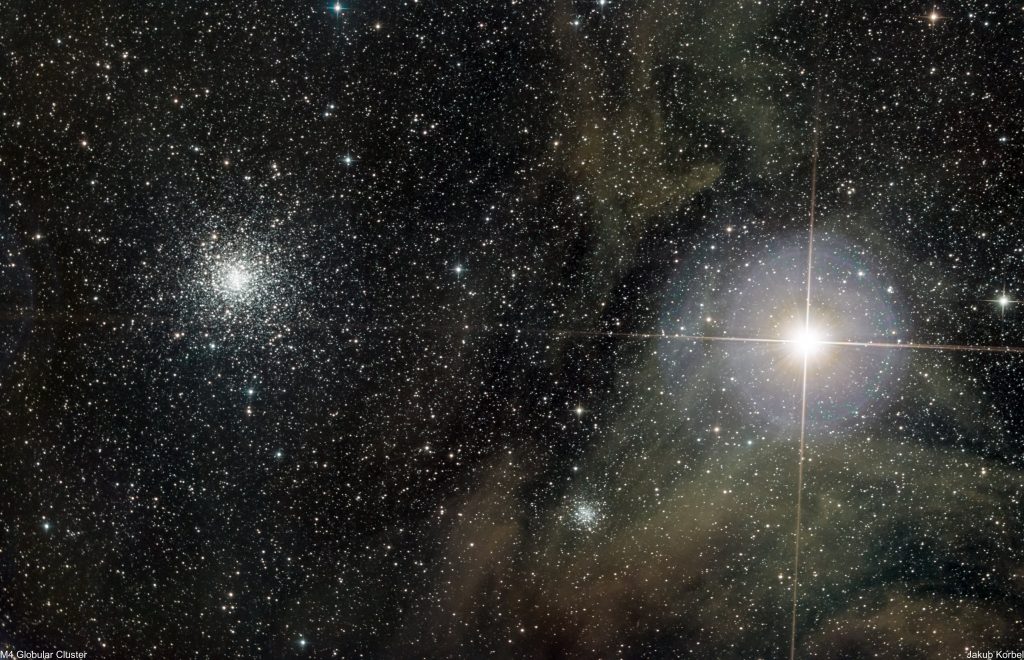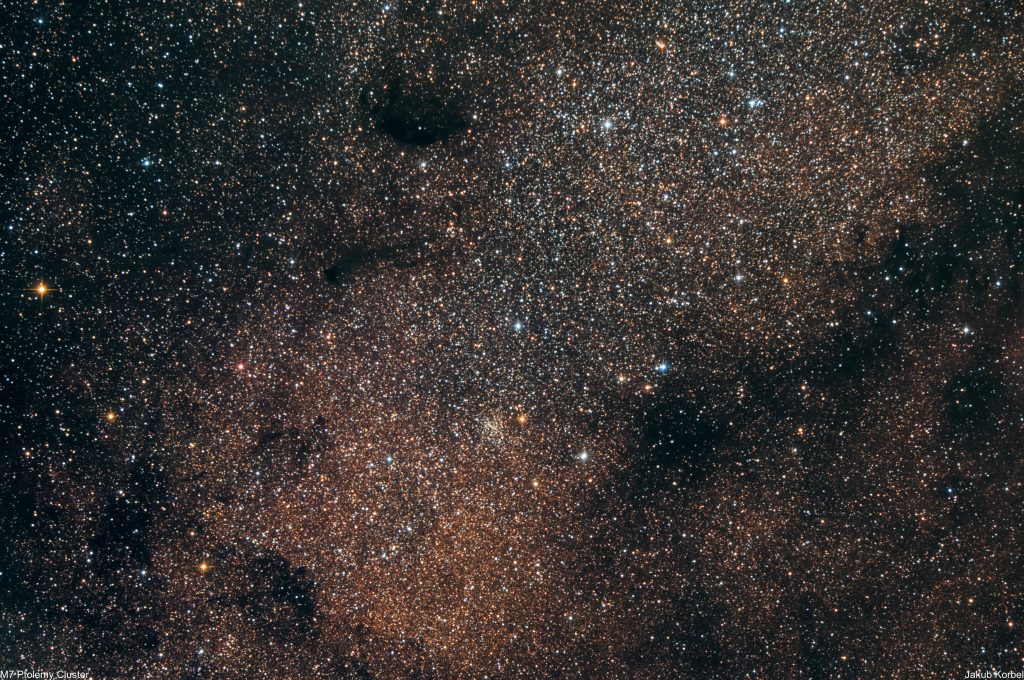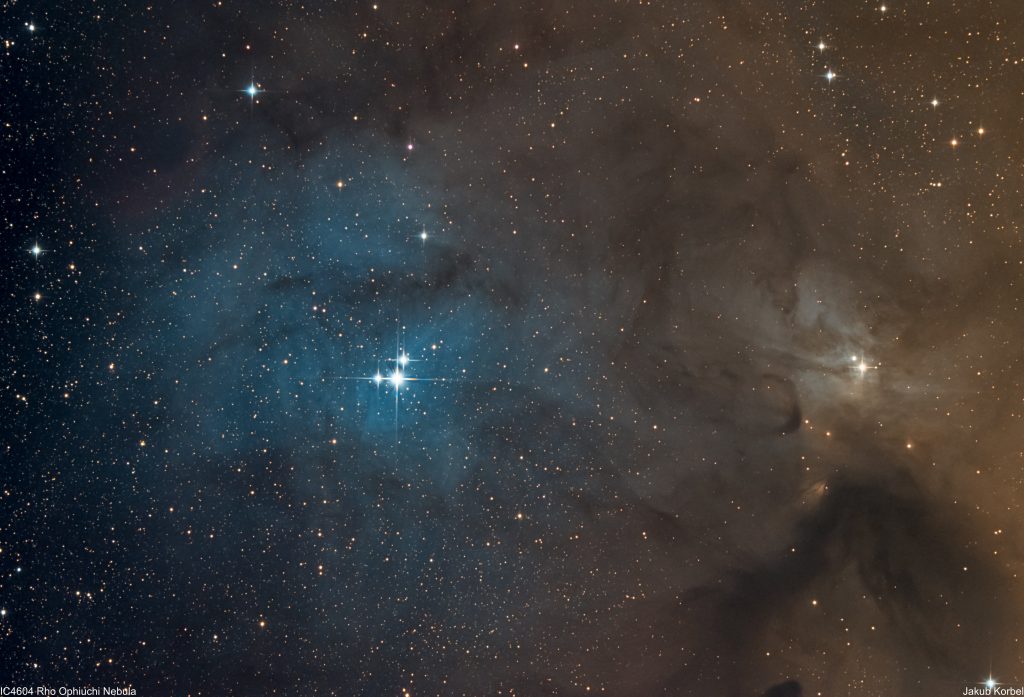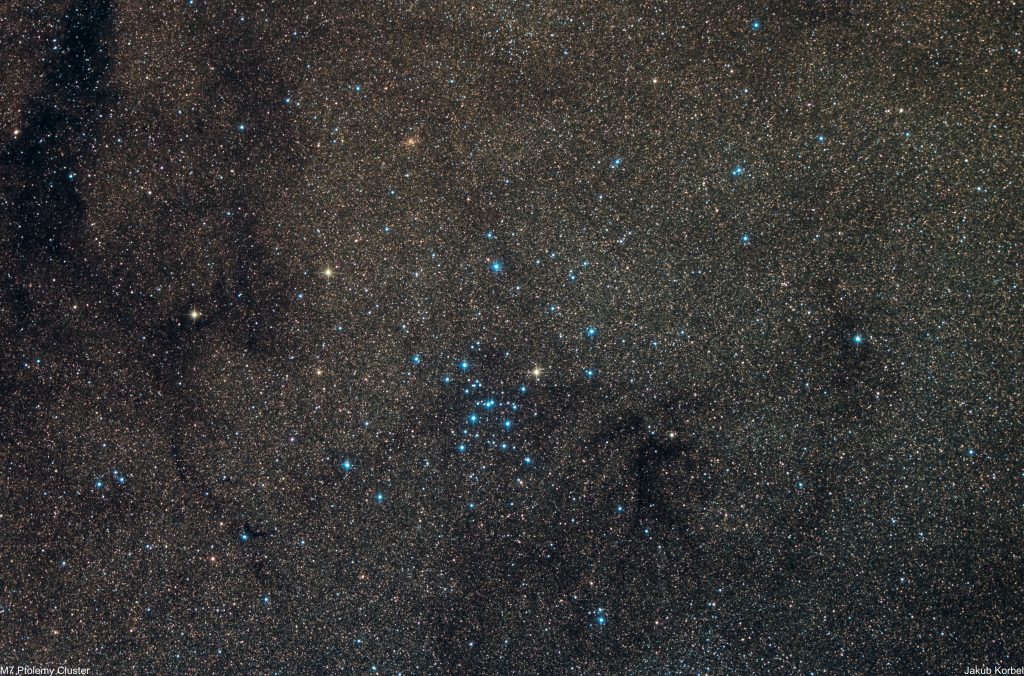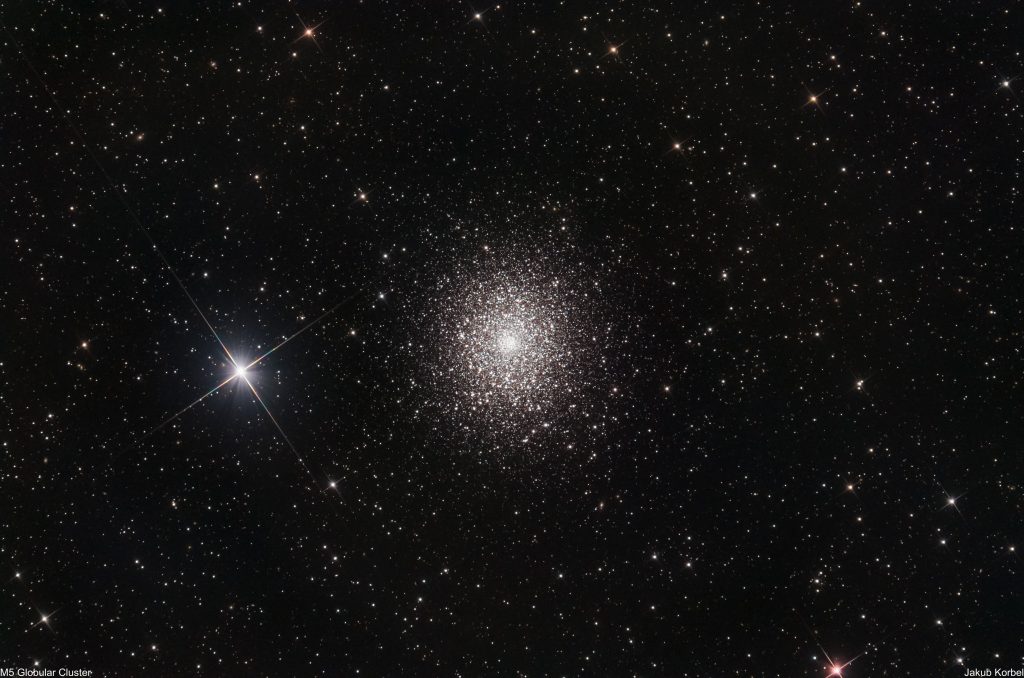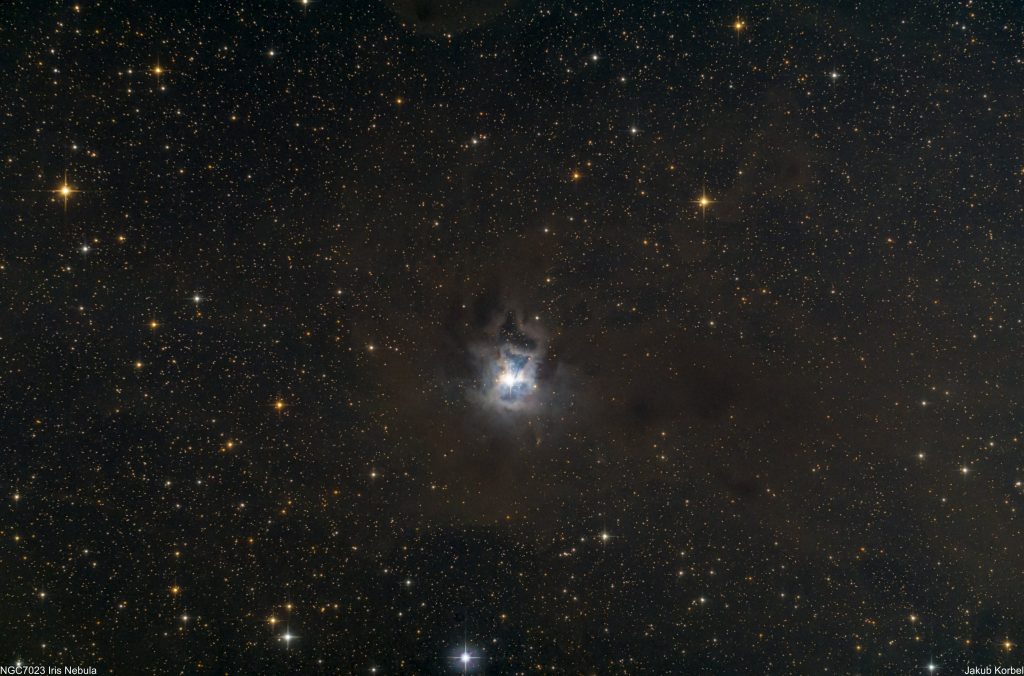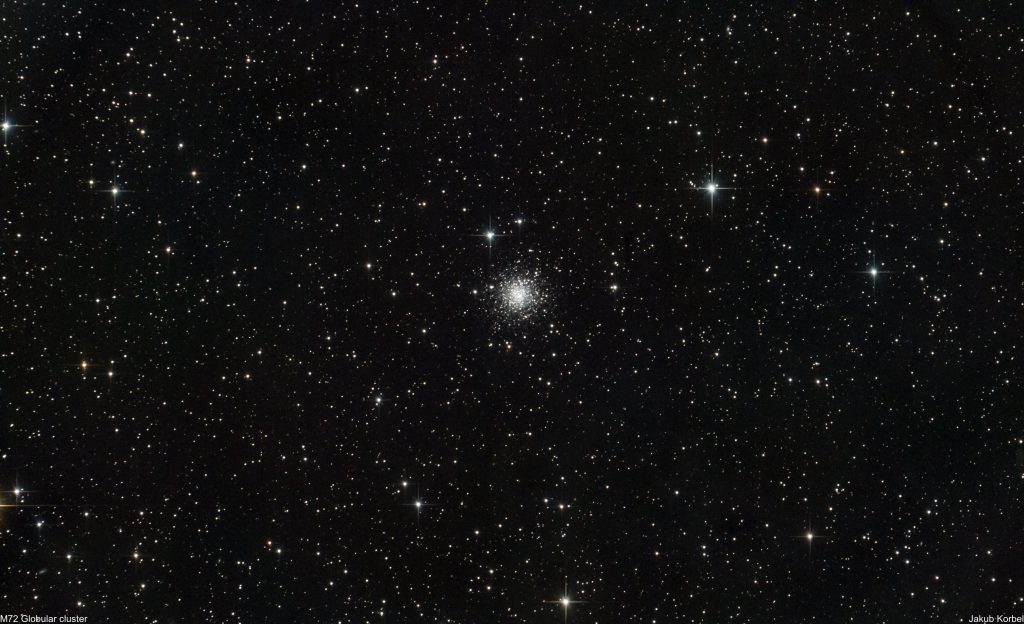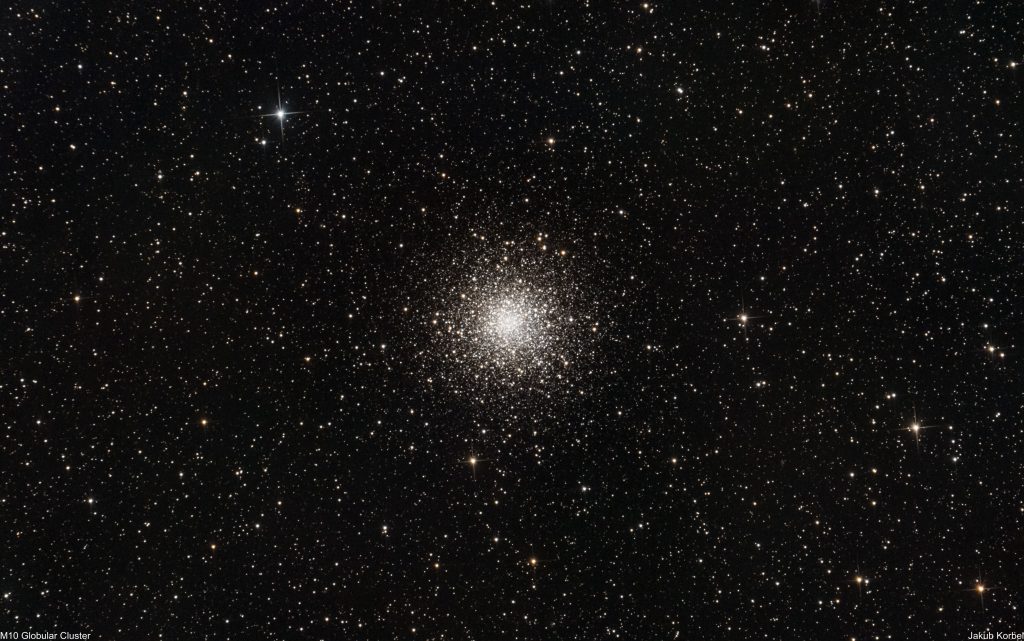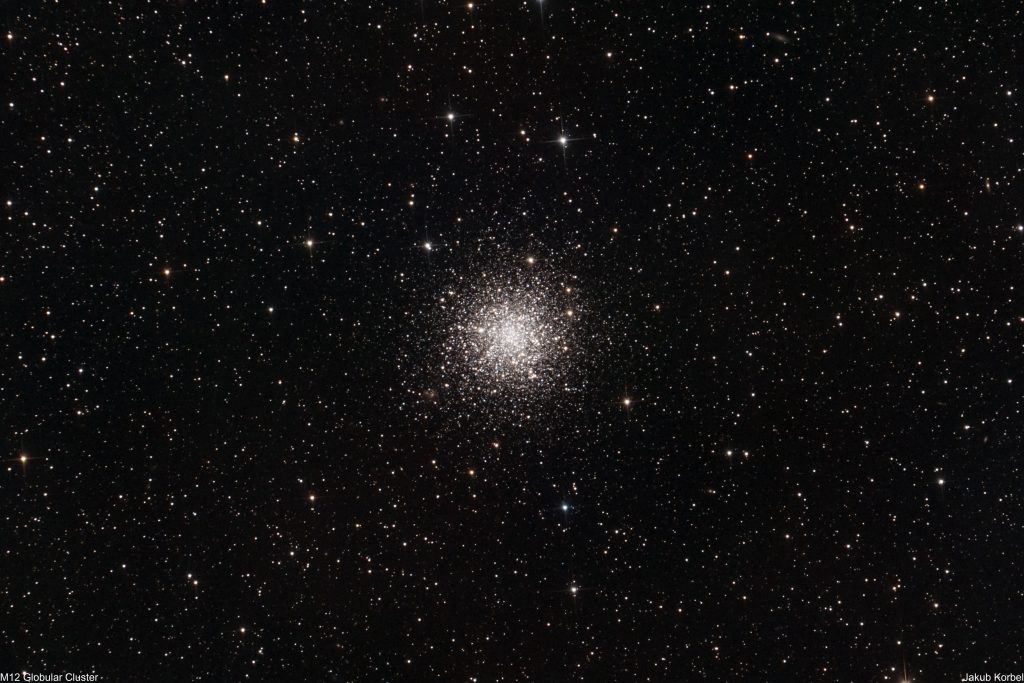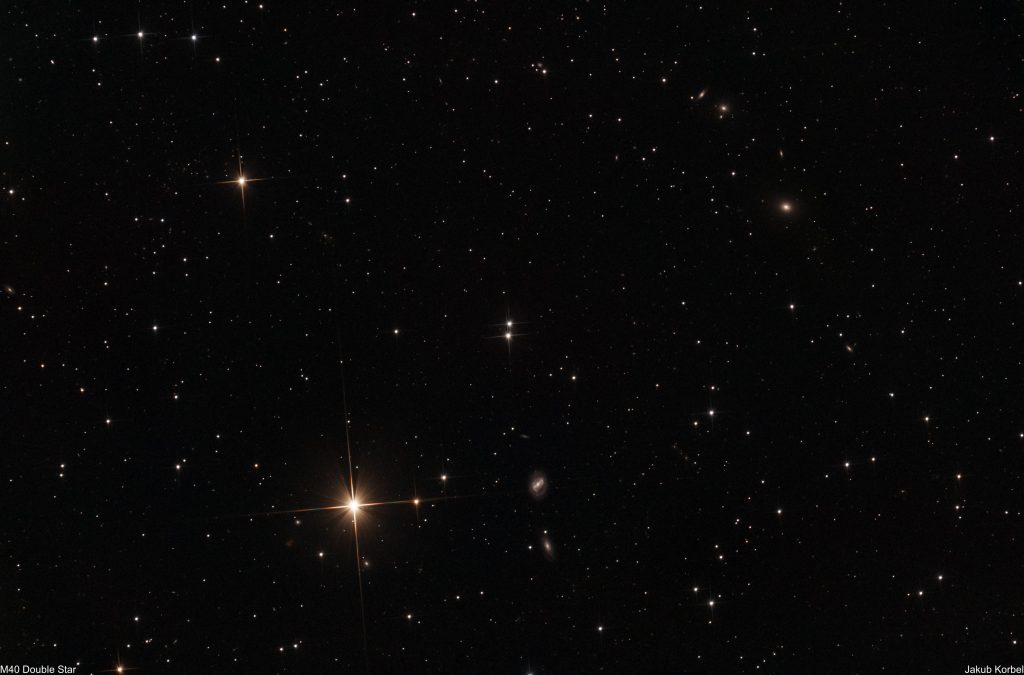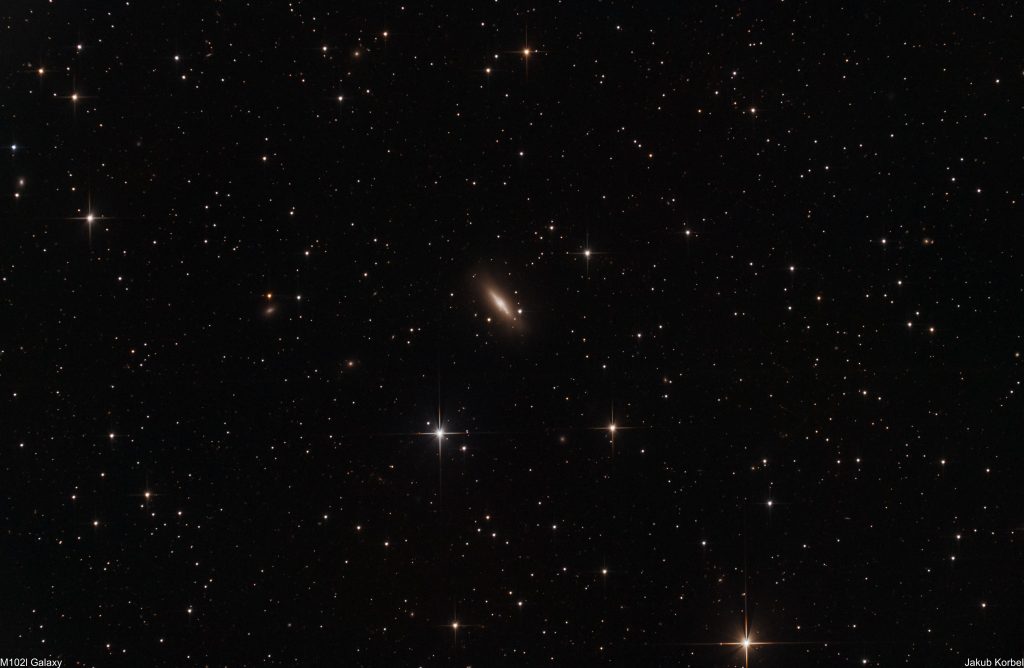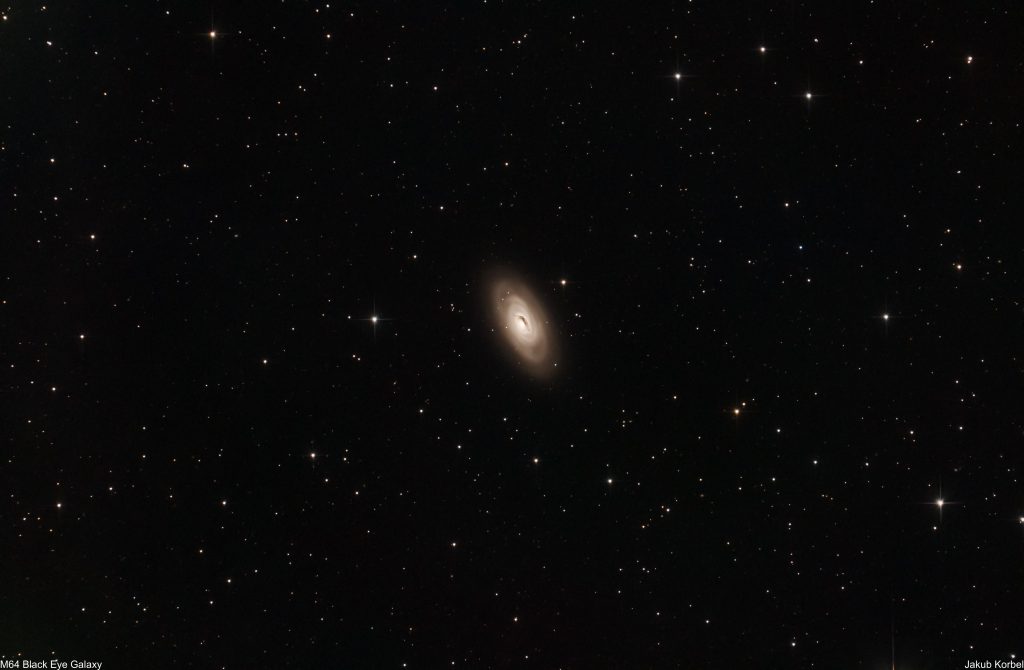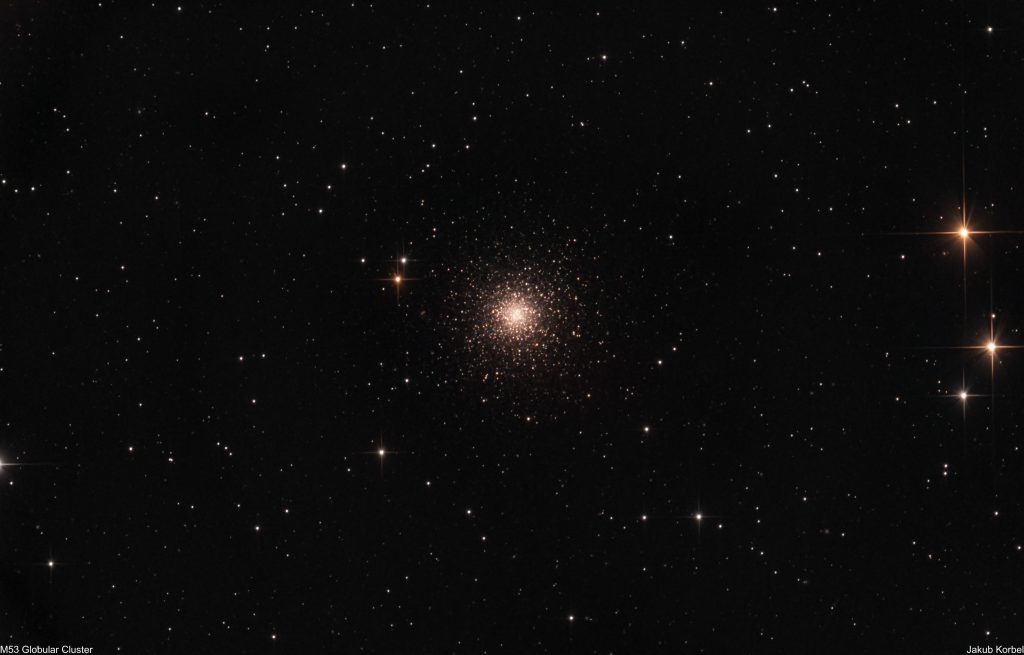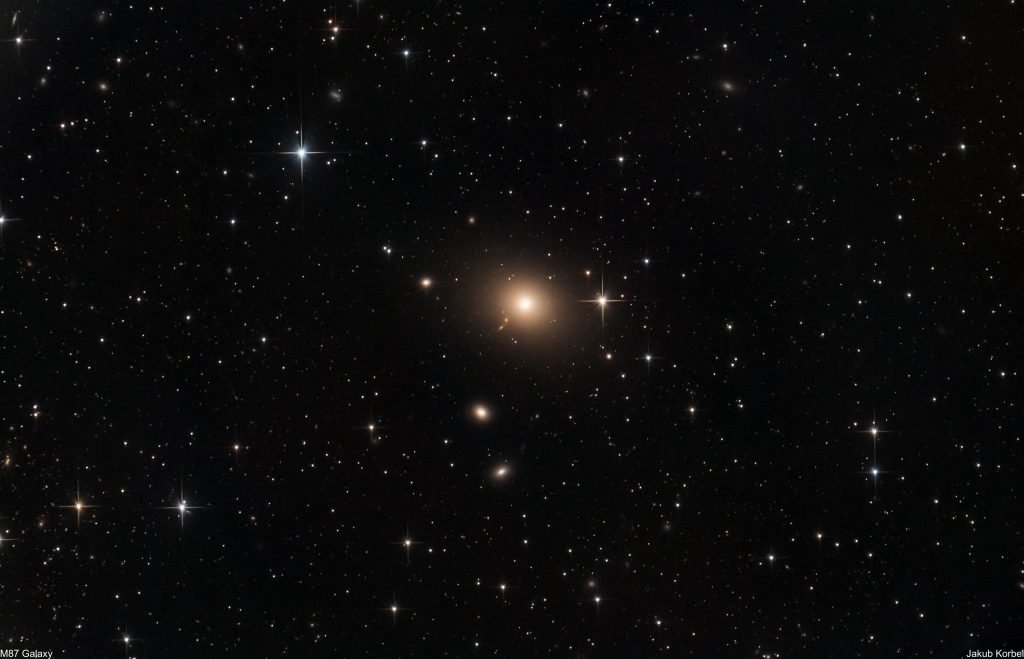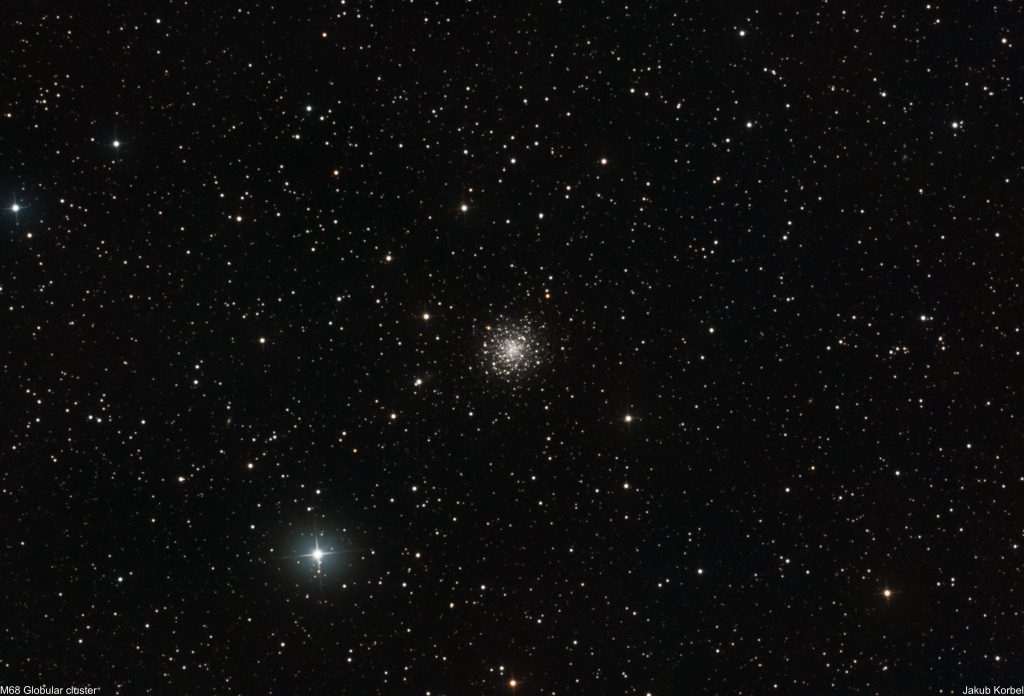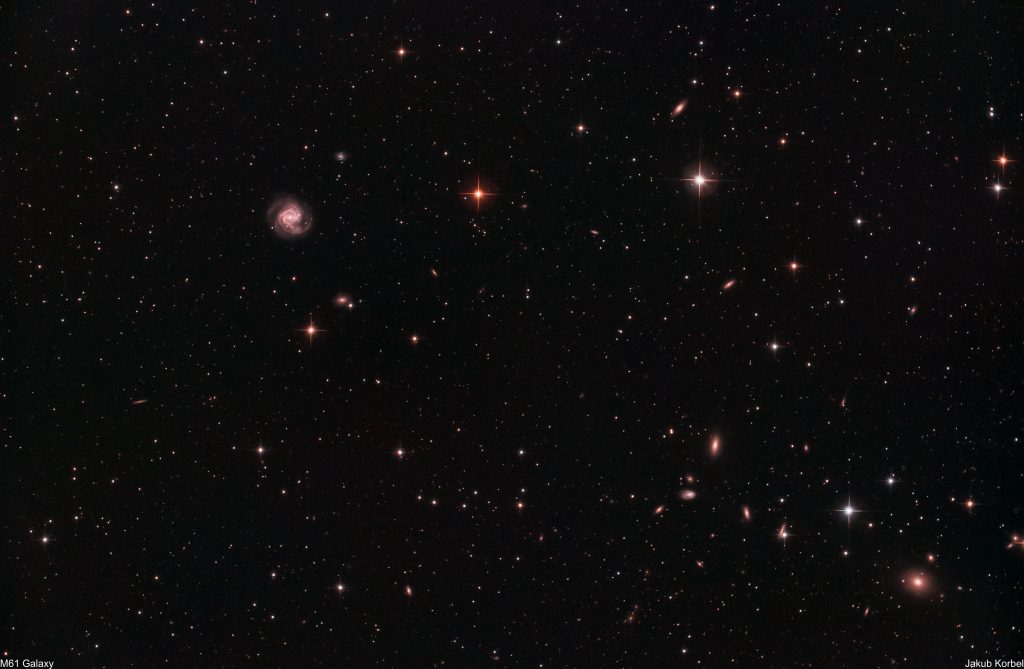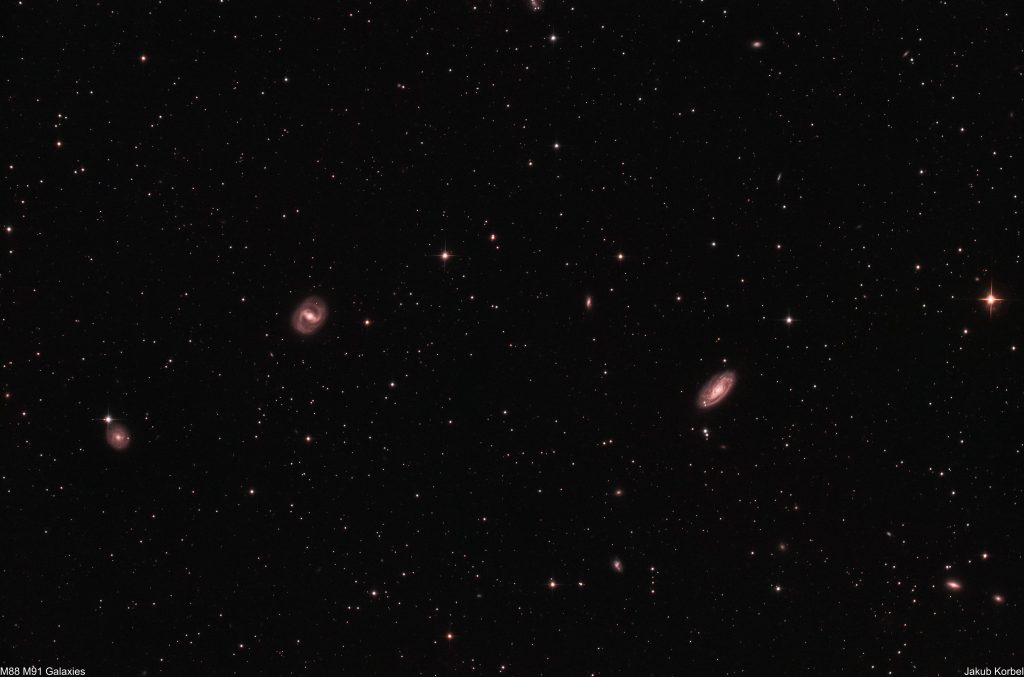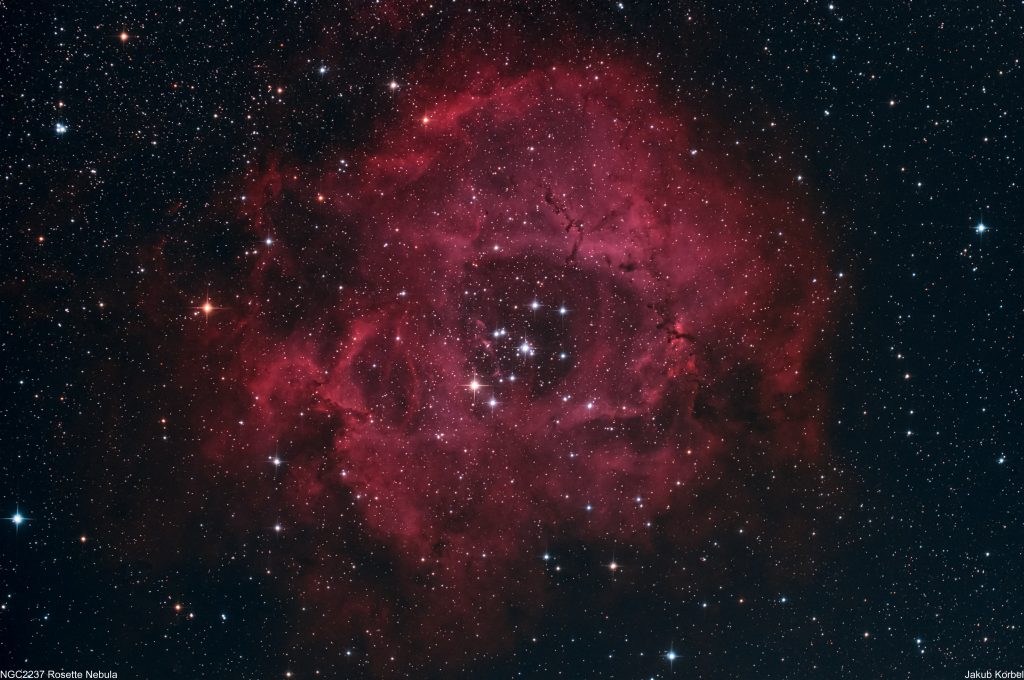Eagle Nebula is probably the most known deep space object, due to one picture from the Hubble Space Telescope. The pillars of creation were detected, where the new stars are born. I already captured this nebula by using narrowband filters and a monochrome camera. This time I used a different approach – a one-shot color camera + a new IDAS NB1 Nebula Filter. This filter should completely suppress the light pollution from sodium lamps and partially from LED lamps, passing the most interesting wavelength of H-alpha, OIII, and H-beta. In my opinion, it works well even in my light-polluted home.
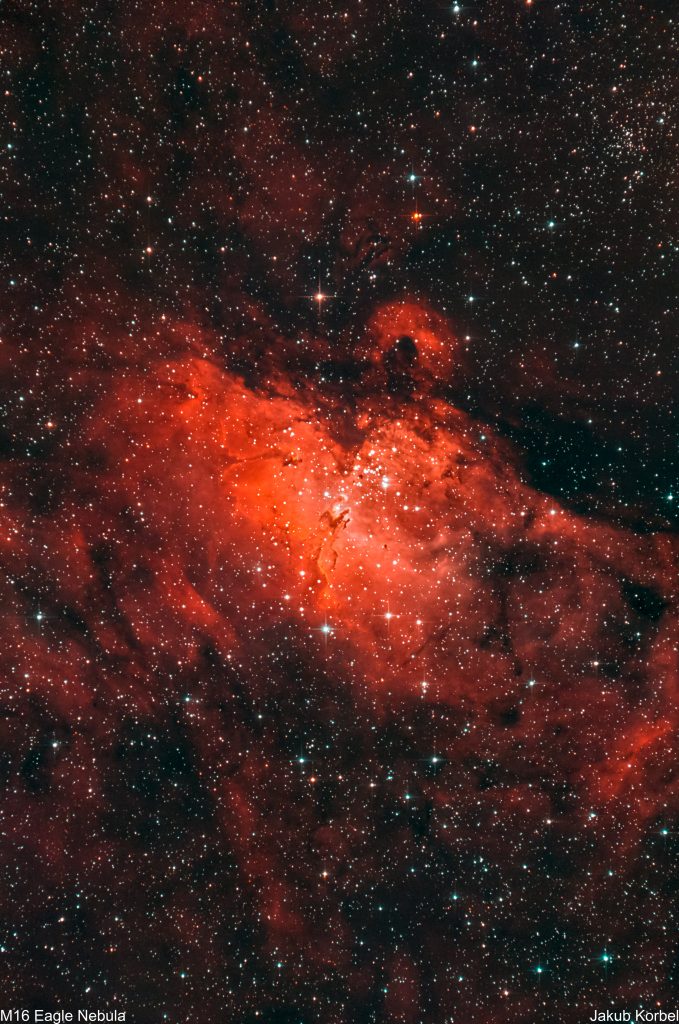
Technical details:
| Telescope | Newton 254/1000 mm |
| Aperture | 254 mm |
| Focal length | 950 mm |
| Mount | Gemini G53f |
| Autoguiding | ZWO 174MM, TS 60/240 mm |
| Camera | ZWO 071 Pro @-5°C |
| Corrector | MaxField coma corrector |
| Filters | IDAS NB1 Nebula Filter |
| Exposure | 82x180s, Gain 95, bin 1x1, |
| Date | 2020-08-09 |

